
Answer: Decades of experience, a virtuoso’s mastery of the guitar, complete knowledge of every scale, mode, chord, and inversion, in-depth understanding of multiple styles, and the ability to mix it all together with ease. As they like to say on Internet forums, “tone is in the fingers.”
That and, “Why would you want to sound like someone else?” are the two standard answers to, “How do I get <insert famous guitarist’s name here> tone?” I hate those answers, and I’ll bet you do too. So I’m going to show you the steps I took on my quest to nail Brian Setzer’s tone. Not only that, I’ll show you two different ways to do it: mostly analog, using a real Fender Bassman, and mostly digital using a Fractal Audio Axe-FX Ultra.
This is a long article—much longer than my usual fare. There are many details to be explored, but if you’re interested in the topic, I think this will be a fun read. Please remember that what I’m recreating here is Brian Setzer’s live tone. In the studio, Brian uses a variety of guitars, amps, and effects. On stage though, his rig is usually the same. Remember too, that Mr. Setzer is an extremely accomplished guitarist who changes techniques on the fly. If you’re 90% there and you can’t figure out what’s missing, try to catch a video of him playing the song in question. He may have gone from flatpicking to finger picking in the middle of the song, and that can really change his tone. PIcking dynamics are important too, but now I’m getting too far down the, “Tone is in the fingers” side of things, so let’s talk gear.
The (Mostly) Analog Method
The picture to the right (as well as the one above) was taken by me at the Brian Setzer Christmas Show in New Brunswick, NJ, in December of 2009. With the exception of different guitars, this is the rig that Brian Setzer used for the entire show.
Here’s what I have learned about the rig:
- Guitar: Yeah, it’s a Gretsch. The one in the pic looks like an older Setzer signature SSLVO, but he uses quite a few different models on stage.
- Amp: 1963 Fender Blonde Bassman. There are two on stage. There are always two, but I only ever see one in use. Sometimes they are stacked like this, and sometimes they are side by side. I believe the second amp is a failover amp in case the first one dies.
- Tubes: Tungsol 5881 or NOS JAN Phillips 6G6WGB
- Preamp Tubes: Chinese 12AX7 (see details below)
- Cabinet: 1963 Blonde Bassman Cabinet wired with 12ga wire.
- Speakers: Two Celstion Vintage-30s
- Delay: Roland RE-301 Space Echo
- Cable: Brian uses a very long Canare instrument cable. How long? That seems to be up for debate. 30-60 feet lengths are commonly quoted.
- Mic1 (Left): Audio Technica AE3000 (I’ve seen others as well)
- Mic2 (Right): Royers R121L
So – buy all that stuff, plug it in and go to town. Simple, right? Yes and no. Let’s dig in a bit deeper.
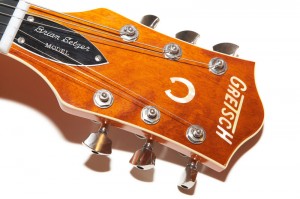
When shopping used, check to make sure the guitar has trestle bracing. Generally speaking, models made before 2004 do not, and those in 2004 or thereafter do. Trestle bracing inside the guitar helps to prevent feedback and alters the feel and tone of the guitar. You’ll do fine without it, but for my money, I like the trestle bracing. Playing a ’63 Bassman loud enough to get the power tubes cranking means ear-splitting volume. If that’s your plan, you’ll appreciate the feedback resistance of the post-2004 models.
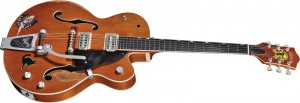
Can you play Brian Setzer music on a different kind of guitar? Of course you can. When I’m too lazy to get the Gretsch out the case, I practice on my Jackson Soloist. I don’t get quite the same sound, but it works. Of course you can play on a 5120 Gretsch Electromatic too. I played on a Guild X170T before I got my Gretsch. Remember that 90% of the people in the audience will have no idea what kind of guitar you have, so if it works for you, it will work for them. A hollow body with TV Jones Classics or Filtertrons is what you’re really after though. And orange just looks cool.
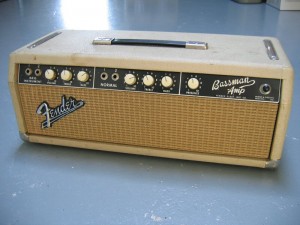
1963 Blonde Bassman amps haven’t been made since, well, 1963 (or 1964 to be accurate), and contrary to what you may hear from other people, you will not get the same sound from, “any fender amp”. In fact, you won’t get the same sound from a 1962 or a 1964 Fender Bassman. Why?
A 1962 Bassman has a 6G6-A circuit and the 1963 has a 6G6-B. What are the differences? I’m no electronics guy, but I’ve read that the Treble and Presence is wired differently. I’ve read many articles in magazines where Brian Setzer says that he just “listens with his ears.” He just chooses what sounds best to him, and he chooses the 1963 6G6-B.
The 1964 Bassman uses a completely difference circuit, called the AA864. This circuit uses a different tube as the phase inverter (12AT7 vs. 12AX7) and does not have a Presence control. There was a transitional 1964, called the “Tuxedo” by many, that had a black face with white knobs. If you find one, look for the Presence control. If it has one, it’s likely a 6G6-B. If it has a bright switch, it’s likely an AA864. Still a great amp, but not what we’re after here. Remember, it’s the 6G6-B circuit we want. Look at the tube sticker inside the head (if it’s still there). It should say, “Bassman” Amplifier – Model 6G6-B.
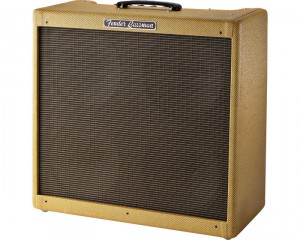
There are many different Bassmans out there, with many different circuits. If you’re going down the Bassman path, my recomendation is to get a real 1963 6G6-B. There have not been many clones of this amp made. I believe this is because you can get a real ’63 for about the same price or less than it would cost to buy a reissue. There are a small number of pretty nice boutique options though. Tavo Vega makes the Blondeshell which can be seen over at https://www.thenocturnebrain.com/ I was going to get one of these before a real ’63 became available to me. The Gomez El Sonido is another option, as is the Marsh 6G6B Bassman. They all cost more than the real thing, but the real thing is now almost 50 years old, and like any senior, will need some special attention that the younger versions just don’t require.
The settings from Brian Setzer’s Bassman in the beginning of this article are as follows:
Bass Channel (not used)
- All Knobs: 1
Normal Channel
- Volume: 5
- Treble: 8
- Bass: 4.5
- Presence: 8.5
Every amp is slightly different, but this is a great starting point. When adjusting to taste, my Bassman ends up with similar settings.
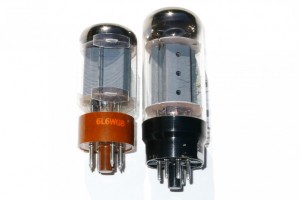
The tubes are an important part of the equation, because the desired tubes lower the power of the amp which will result in less clean headroom. These NOS tubes generally last longer and sound better than modern equivalent, though I’ve read great things about the newer Tung Sol 5881s.
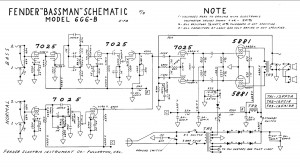
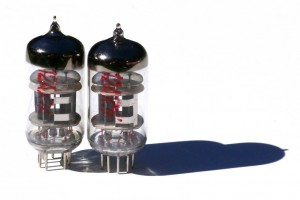
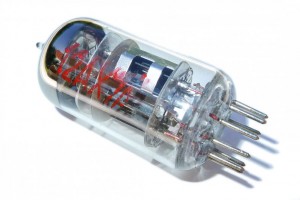
- No identifing marks relating to place of origin, though some sported a white sticker that said, “Made in China” in red letters
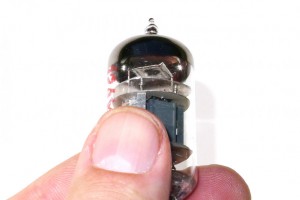
- Large red block letters stamped on the glass that identified the tube type (12AX7, 12AT7, etc.)
- A square, dimpled getter. What does that mean? Look at the picture to the right. Underneath the silver cap on top of the tube, you’ll see a small square with a round indentation in the center. That, my friends, is a square dimpled getter.
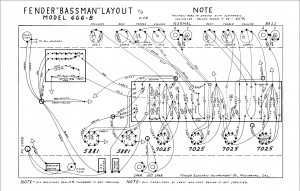
The ’63 Fender Bassman has two channels, Bass and Normal. Brian Setzer uses the normal channel, so that’s going to affect our choice. Normally, if you’ve only got one great or NOS preamp tube, people will tell you to put it into V1, which is usually the farthest tube from the power tubes. If we do that on a 6G6-B amp, it will only affect the bass channel, and we’ll never hear it.
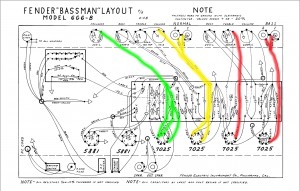
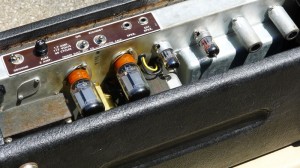
- 5881 Power Tube
- 5881 Power Tube
- 12AX7 Phase Inverter
- 12AX7 Normal Channel
- 12AX7 Bass Channel
- 12AX7 Bass Channel
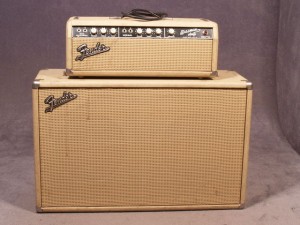
A stock ’63 Bassman will have smooth blond tolex and a wheat grill, but don’t get too hung up on the cosmetics. Over the past few decades, many of them have been retolexed or had different cloth installed. These are easy things to replace unless you absolutely need a completely original amp and cab.
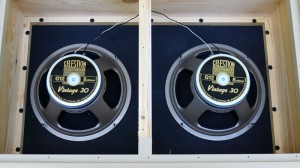
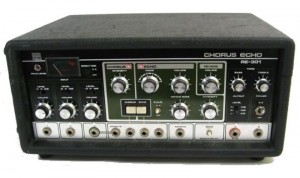
Echo: The Roland RE-301 does a couple of things that are critical when trying to get that tone. First, and most obvious, is the tape delay. No matter what, an analog or digital delay will not sound like a tape delay. For slap-back it’s not a huge deal, and let’s be honest, the audience will never notice the difference between a vintage tape echo and a modern digital delay when we’re talking about a few quick 100ms repeats. Things get more complicated though when the delay is lengthened for the king of all Setzer tone examples, Sleepwalk.
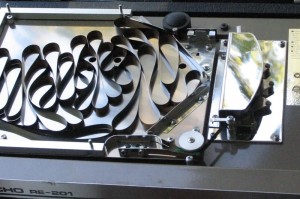
A tape echo is very much like an old VCR in that it has a tape that records the signal being fed to it for future playback. The image in the previous paragraph shows the actual tape within a Roland RE-201 (the tape portion is similar between the two models). Can you imagine there being any problems with such a machine? While an analog delay will have generation loss, it does not have other problematic aspects of tape delays such as tape age, wow and flutter. These issues add a certain something to a tape delay’s recorded echos that, until recently, you just couldn’t get via other means.
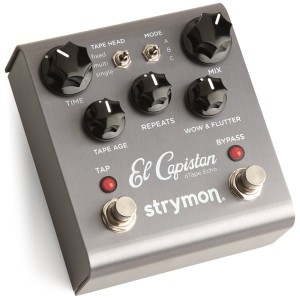
In my testing, the following quick and dirty settings seem to work:
- Tape Head: Fixed
- Mode: A (B for Sleepwalk)
- Time: Adjust to taste (about 2:00 for me)
- Mix: Adjust to taste (about 10:00 for me)
- Tape Age: All the way off (about 7:00 for me). Even with the tape age all the way off (it’s not really off), this pedal will sound like a tape delay.
- Repeats: Adjust so you only hear one repeat (about 8:00 for me)
- Wow & Flutter: All the way off (about 7:00 for me). Again, even with this off (it’s not really off), it will sound like a tape delay.
I find that with these settings, simply by flipping the Mode switch from A to B, I can go from slapback to Sleepwalk without changing anything else. If you have the strymon favorites switch, I imagine that you could switch between the two settings with a foot switch. I have not tried this though.
These settings get the job done, and I was perfectly happy with them until I gave a critical listen to The Guitar of Brian Setzer DVD, in which Brian describes his delay as three quick repeats, and then gives a quick whack of the strings while palm muted. Lo and behold: three repeats. So I sat with the DVD and my equipment and came up with matching settings. Here are the settings, listing only those different than above, to match what I hear on this DVD. These setting are more accurate to my ears, but involve more thinking when changing them.
Slapback
- Mode: A
- Time: About 12:00
- Repeats: About 10:30
Sleepwalk
- Mode: B
- Time: About 2:00
- Repeats: About 10:00
Note that these settings may change with different volumes. At higher volumes you might hear more repeats than you do at lower levels. Luckily, even though it has a lot of knobs, this pedal is very easy to dial in. As you can probably tell, I cannot rave enough about this pedal. For me it was the missing link in my quest. Actually it was half of the missing link. The other half comes next.
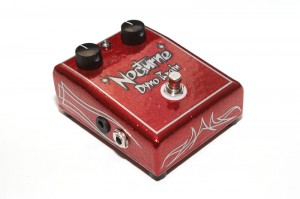
The Roland RE-201 uses discrete transistors and carbon comp resisters in its preamp while the RE-301 uses an op-amp (integrated circuit) and carbon film resisters. Suffice to say, stuff like that matters. Tavo Vega, who’s obsessive quest for Setzer tone makes mine look mild, again has the answer. Tavo has made a pedal called the Nocturne Dyno Brain. It used to be called the “Brain Seltzer” (read that carefully), but that’s another story. This pedal has one purpose: to replicate the preamp from a Roland RE-301 Space Echo. He has done so brilliantly and packaged it up in a dead sexy stomp-box. This pedal alone adds it (whatever it is) to a Gretsch plugged into a Blonde Bassman. Even if you leave the knobs at noon (which I recommend), the Nocturne fattens up the Gretsch in a way that’s tough to describe. It’s louder, fatter, meaner… Gretschier. If you want that Sezter tone, but don’t want a giant Space Echo to deal with, you need this pedal feeding the El Capistan.
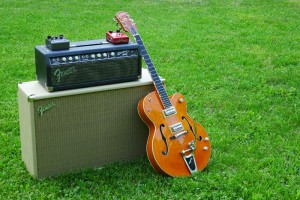
Take your Gretsch, plug it into the Nocturne. Plug the Nocturne into the El Capistan, and the El Capistan into the Normal channel of a properly equipped ’63 Blonde Bassman, and you’ve got that tone. That wonderful tone. At that point it’s all up to you and your fingers.
The (Mostly) Digital Method
Sure the Axe-FX with a Full Range Flat Response (FRFR) speaker doesn’t look as sexy with a Gretsch as the real ’63 Bassman does, but it’s a LOT easier to carry around. It also doesn’t require any tubes, and can produce stellar tone at a reasonable volume. Let’s not forget the ability to connect direct to the board for front of house sound, thus allowing my QSC K12 speaker to be used as a monitor, and it’s damn near the perfect gigging rig. On the off chance that I find a 12-piece orchestra looking for a orange guitar-weilding frontman, I’ll bring the Bassman. Until then, this is pretty much my gigging rig of choice.
In my rack I have a Furman Power conditioner that I use mostly for power distribution and the cool lights, a Line-6 Wireless rig that I rarely use, and the Axe-FX Ultra. The wireless and power conditioner have no real bearing on the tone we’re after, so they’re not mentioned any further.
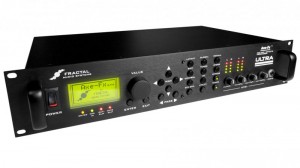
I have two presets that I use. The first is called Stray Cat Strut, and I use it for almost every Setzer song I play. The second, entitled Sleepwalk, is used for, well, I think can figure that out. The two are identical except for the delay repeat time. If you’d like just a simple ’63 Bassman patch, bypass all the effects except the GEQ block. You can download them here for use with Axe-Edit (right-click and choose save-as or download linked file as):
- Sleepwalk: Sleepwalk.syx
- Stray Cat Strut: Stray Cat Strut.syx
Now let’s take a look at how I’ve set up my Axe-FX. I’ll cover the settings in each block and include a screenshot from Axe-Edit.
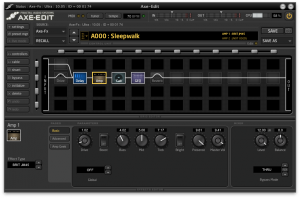
When all is said and done, between the tubes and speakers, Brian Setzer’s Fender Bassman behaves more like a Marshall JTM-45 (on fat-ass steroids as Tavo puts it) than it does any other Fender amp. That’s the key, but using the JTM-45 model doesn’t get you there either. It sounded better than the ’59 Bassman model, but it still wasn’t quite right. That’s when someone reminded me that the Axe-FX allows you to mix and match different parts of amps into something new. Using the following settings, the amp really opened up and started to sound more like what I wanted. The key was using the tone stack from a brown-face amp and adjustting the other settings as shown.
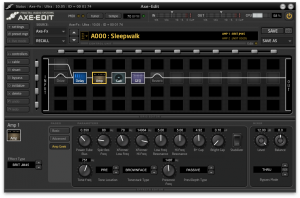
- Amp: Brit JM45
- Drive: 1
- Bass: 4
- Mid: 5
- Treble: 7
- Presence: 8-10
- Sag: 2-4
- Master: 9.41
- Level: 12.0 dB
- Tonestack Type: Brownface
- Tonestack Location: Pre
- Presence Frequency: 1,495Hz
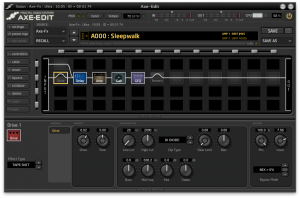
I generally set this to be pretty subtle. I have everything set to defaults, and the following tweaked:
- Type: Tape Dist
- Drive: 6.2
- Level: 7.56
I actually go back and forth with the drive block when I’m in heavy tweaking mode. Some days I like it there, and other days I bypass it entirely. As with everything here, feel free to mess around with it until you like the sound. The real key here is using the Tape Dist type. That’s about the closest thing I’ve found to the RE-301’s preamp in the Axe-FX. I actually like the sound of the Dyno Brain in front of the Axe-FX better, but it’s one more thing to carry around, so I usually don’t use it when playing through this rig.
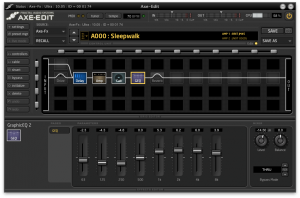
- Level: -14.50 dB
- 63: –2.3
- 125: -4.3
- 250: -4.8
- 500: 0.0
- 1K: 5.3
- 2K: 6.2
- 4K: 6.0
- 8K: 3.9
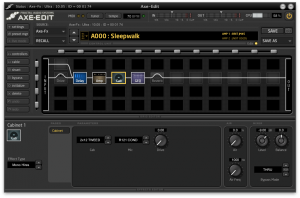
- Cabinet: 2×12 Tweed. I know, this is contrary to the real deal. I used the 4xV30 setting, but it’s too dark for my tastes. The 2×12 Tweed setting seems to add just the right bit of jangle.
- Mic: R121 Cond
- Drive: 0.0
- Level: -9.00 dB
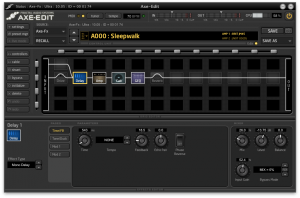
Slapback
- Time: 100 ms
- Feedback: 25.2%
- Lo-Cut Freq: 149.6 Hz
- Hi-Cut Freq: 4056 Hz
- Mix: 15%
Sleepwalk
- Time: 543 ms
- Feedback: 25.2%
- Lo-Cut Freq: 149.6 Hz
- Hi-Cut Freq: 4056 Hz
- Mix: 15%
Reverb: I actually don’t like the sound of reverb with these settings, but sometimes I’ll add a touch when playing at low volume. As you can see, I usually have it bypassed. I pretty much choose Medium or Small Room and leave it at that.
Bare Bones: I like the sound of the El Capistan better than that of the Axe-FX’s tape delay, and I like the Nocturne Dyno Brain better than the Axe-FX drive, so I also have a preset with everything but the Amp and EQ bypassed. With that preset I can put the pedals before the Axe-FX and go to town.
Summary
So there you have it. I hope you enjoyed my documented obsessiveness, and I hope that this article helps someone who’s chasing that Brian Setzer tone. Remember, this should be fun, so if you get hung up on not being able to find real 80s Chinese preamp tubes, don’t sweat it. Just get some Ruby tubes and get back to rocking. It’s about making music, not buying gear. If this does help you, I’d love to hear from you! Feel free to email me or leave a comment. And like I wrote earlier, if you’ve got a better solution or a tweak for my Axe-FX patches, I’d love to hear about those too.
Acknowledgements
Brian Setzer
I have loved Brian Setzer’s music since I first heard the Stray Cats back in 1981. As I’ve grown older, I’ve been fascinated to learn how wonderfully complex his music is. Usually when I learn a song, I first think, “Man, that sounds hard”, only to learn that it’s not. With Brian Setzer’s music, I always seem to think, “That doesn’t sound too hard”, only to discover that I don’t know nearly enough about chord inversions, modes, jazz and how music really works. In a world filled with soulless music performed by “artists” who can’t read music, don’t write their own songs, and distract us with dance moves, Mr. Setzer’s music is the real deal. Thank you for a lifetime of great music.
Tavo Vega
I need to acknowledge the tireless work and numerous online postings of Tavo Vega. Tavo (TVTheWiredTurtle online) is a self proclaimed “archiver of all things Setzer”. Much of the information he has posted online has either directly influenced my purchasing decisions, or started me down the path of obsession that further led me to new answers. His Nocturne Dyno Brain pedal is fantastic. If you’re chasing the Setzer tone, do yourself a favor and pick one up. Tavo was also kind enough to help me with some fact-checking for this article, a fact for which I am grateful. Thanks man – you rock! Tavo’s website is: https://www.thenocturnebrain.com.
References used in my research
- DVD: The Brian Seztzer Orchestra, Live in Japan
- DVD: The Guitar of Brian Setzer
- https://www.briansetzer.com/
- https://fohonline.com/index.php?option=com_content&task=view&id=3770&Itemid=1
- https://www.gretsch-talk.com/forum/pedal-pushers-forum/36012-two-space-echo-pre-amps.html
- https://www.tdpri.com/forum/stomp-box/177850-new-nocturne-pedal.html
- https://web.archive.org/web/20080305150257/https://www.cathyandnick.com/Nick_pages/tabs/Brian_Setzer/setzer_sound.htm
- https://vintageamps.com/plexiboard/viewtopic.php?f=13&t=61211
- https://www.thegearpage.net/board/showthread.php?t=884468
- https://www.fenderforum.com/forum.html?db=&topic_number=549123&lastpost=2006-02-2022:11:54
- https://gretschpages.com/forum/players/brian-setzer-amps/23506/page1/
- https://www.tvjones.com/
- https://www.thenocturnebrain.com
- https://www.gretschguitars.com/
- https://en.wikipedia.org/wiki/Roland_RE-201
Donate: PayPal Crypto:
ETH: 0x0AC57f8e0A49dc06Ed4f7926d169342ec4FCd461
Doge: DFWpLqMr6QF67t4wRzvTtNd8UDwjGTQBGs

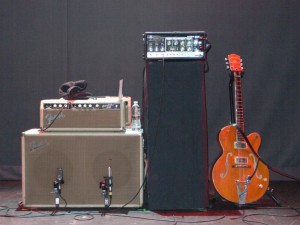
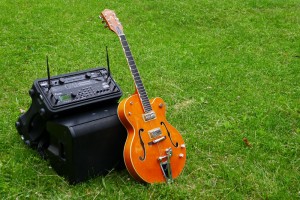
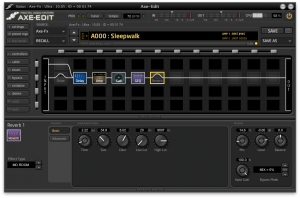
Awesome article – can’t wait to try some of these settings on the Axe-Fx. Thanks for compiling it together.
Thank you for your very in depth article and your willingness to share your time and knowledge on this subject. I was wondering about how the axefx settings you mentioned would (or could!)possibly relate to settings in a boss gt100 v2 since the programming chain is some what similar to that of the axefx unit. I understand that the amps and effects resolution is nowhere near in comparison to the axefx, but maybe close enough to be relative to the average ear. Again, thanks for the informative article.
Sorry – I really have no idea.
Hi,
Awesome article!!! Only one little remark, 3600 units of the Bassman 6G6-B were produced in 1964, I have one.
Thanks!
Phil
Superb article and in-depth look into all things Setzer. I’ve been on this quest for years too and I must admit, I learned a thing or two (or three…; ) so I cannot thank you enough. I know how elusive those chinese tubes are as I have spent many hours using the search engines but to no avail. And thanks to you, I may now have to check out the strymon El Capistan. Take care, Robbie
Hi,
This is awesome! Thanks for sharing. I was there in dec 2009 in New Brunswick, and I made this pic wich is no influence on Setzer’s Tone but probably “soul & spirit”…
https://hoodoovoodoolounge.darkbb.com/t1712-brian-s-amp-blows-in-opening-act-love-it.
Thanks a lot!
Franck
Do you know how many of the red stamped chinese 12ax7 i have thrown away. Dozens and dozens, probably hundreds. HAA HAA.
10 years ago, common opinion was they were crap, get them out of there. Funny how things change.
Hi!
Do you know what Guitar model uses in Hot licks video? It have 4 knobs + 1 volumen, mmm… i like the sound of that picks and I think that sounds very diferent of a modern TV Jonnes, what do you think? I love that old Setzer Sound. P.e. I don’t like too much the sound of “13” album or “Sun records tribute”… I’m crazy?
Happy Hollidays!
Brian’s guitar in the Hot Licks video is probably a 1960 (judging by the flamey top and Gretsch branded Bigsby) that’s been modified. I think it’s formerly Steve Miller’s, who had the two additional knobs added for a more Gibson-like control set. The fingerboard was also modified (likely by Brian – or more specifically Tom from TV Jones) to remove the zero fret.
Current live mic used next to the royer ribbon is the Mojave M-201
check out this vid below from Setzer’s sound man Jimbo Neal on the placement
of the Mojave M-201 and the Royer Ribbon
https://youtu.be/G1PTHYG4U1c
Hello.great article, I’d like to know exactly how the guitar tuned to setzer, I grant it so D # G # C # F # A # D # but I think there’s something different, you could tell me how exactly
thanks
Hello…I appreciate your insight and obvious command of Brians tone.However,I am an “old school” musician and can get “pretty close” to his sound at will.Tell me what you think. I use a ’65 gretch “of all things a country gent” I do have your apparently elusive ’63 bassman head w/ two 2/12 cabs “never opened them up so I’m assuming the speakers are the original oxfords?” To that I use a late 60’s tube tape echoplex and It gets that “fluttering” sound you mentioned (I love it) and an MXR compressor. The amp is installed with nos ’58 RCA blackplates and Mullard pre amp tubes.It sounds about like you would expect.It is extremly controlable.I also use a ’68 Gibson SG with it’s original humbuckers.Since you can see I need a miriad of different sounds I find this set-up works great. It’s not cheap buy any stretch of the imagination since everything is vintage,but it works for not only Brians music but Cream,Hendrix etc.Interesting side note,I have a ’71 Marshall plexi basketweave and that amp dose’nt hold a candle to the bassman (just my opinion)…Your comments welcome. In closing my setup is really simple and more than gets the job done…JJ Schwab@roadrunner.com
I had a 6G6-B 1964 as well. Biggest mistake I ever made was selling that amp
i have buy the ruby tubes 12ax7c5 for my fender hot rod…but the sound are bad and weak, have anyone i idea on witch positions is it good for a hot rod to become a setzer sound?
i have v1 (clean), v2 (overdrive), v3 (phase) positions
thanks!
I have the 6G6 B it is a July Of 1964 Build. It has the Black face with the white knobs. I came close to selling it this past weekend. Not now! Thank you for all the wealth of information you provided. Dan
Great article! A lot of good information!
One thing that is very important to get close to the right tone is the use of an EQ/filter, to control the bass frequencies (you can hear a lot when using the neck pickup, but even in the bridge is necessary a highpass filter). Probably, the signal from mics are processed by some kind of PULTEC or NEVE (EQ/filter). I believe that lowpass filter is not necessary as he uses long cable (cable capacitance will do the job). If you are willing to get “that sound” coming out directly from the speakers, try using a simple highpass RC filter (for example: make 4 RCs in series, with 100k resistors and 47nf capacitors… you will have to “adjust” the values accordingly to your gear – this is just an example, a starting point…) with a pre-amp to compensate the “volume reduction” (and you will have to turn up the bass knob). You will notice, after readjusting the bass knob, that the bass frequencies will sound more “tight” – without a highpass filter, it sounds too “loose” and “out of control”. It won’t make a miracle, but I believe it will sound more like it should be (at least for me it helped). With distortion, dynamics will also change…
Try it and if it works, tell the world this highpass filter thing really helps!
Cheers from Brazil
I also have a 6G6-B blonde bassman, but it’s a 1962. My father gave it to me years ago and was the original owner. You’re right about them having a Marshall vibe.
I’ve been studying up on Brian’s tone and came across your site and this great posting. Thanks for all of the insight.
JT
Hi, great article!
It would be great to get some kemper amp profiles (www.kemper-amps.com) of your Brian Setzer setting – maybe possible? 🙂
Cheers,
Bernie
Unlikely., since I don’t have a Kemper! 🙂 I also sold my Bassman, so I wouldn’t have anything to profile.
Very impressive work!
I’m just an old noob (47yrs), who just bought an Epiphone ES-339 and put a bigsby on it. Next one will be the cheapest Gretsch i can find. I might even put Filtertrons on the Epi. Bought a Fender Mustang 1 too. I have only played for about a year, and i think Brian Setzer could kick Supermans ass. If one day you are bored enough to fiddle with Fender Fuse, please let me know 🙂
Great Setzer sound page…
I just scored a 63 Bassman B circuit……All original except the previous owner already replaced the speakers with the Vintage 30……. I learned a great deal from your blog …. Thanks
it saved me a ton of time.
I’m also a radio operator…. W0LRF
I had stumbled onto GAD’s treasure-trove before— thanks Man!!
Another radio operator here, K6MNI— with an insight into Brian’s Setzers preferred preamp tube.
Marshall also used that 80s Chinese mil-spec tube: they are 6n4 tubes. I threw some away too, but I rescued them before it was too late!! Look for that designator from the online tube-sellers. They’re not all that rare— or pricy. Just make sure that the 6N4 tubes you find have the red letters and the square dimpled getter that GAD showed us.
Too bad the stores near me don’t carry Strymon or nocturne pedals. I would like to try before I by. May a trip to sweetwater someday in Fort wayne for the strymon. Right now I use two tube screamers( overdrives set to one) with a MRX univibe(vibrato setting low level 60%) in between through an old super reverb amp.Can switch from a sleepwalk sound to a Stray Cat sound by switching the tube screamers off and on. Makes a nice rockabilly-brian sound. Oh and boss rack mount digital reverb. I used the repeat (3) setting from this article. My sound is always evolving and this article will sure to help for years.
Great article. I’m guessing you wrote this a few years back.
My question is…are you certain about the preamp tube for channel 2 being V3?
Not I don’t want to come off as argumentative…but I think it might be V2.
I own a 62 Tremolux…that model ‘bassman’ is essentially the same circuit as the Tremolux without the tremolo.
It has normal and bright channels.
V1 and V2 (respectively) are the preamp tubes feeding each circuit.
Looking at the schematics it seem like V2 might be the tube feeding the ‘normal’ channel of your amp.
I could be very wrong. For some reason I can’t zoom into the schematic to see the details that well, so if I am forgive me…I just wanted to give you a heads up.
Great article either way.
MJN
pull out the first 2 tubes in a 6G6-B and you get no channel 1.. plug into channel Two and the amp works..pull out V3 and channel 2 doesnt work even if V-1 and V-2 are in the chassis. 🙂 Channel one has an extra gain stage.
Hi Gary,
What is the large black cabinet? Is it just a stand for the Echoplex or a speaker cab?
Thanks,
In the Brian Setzer rig pic? My guess is that it’s just a stand for the Space Echo so that he doesn’t have to bend down to adjust it.
Hi Gary,
Are you aware of any current sites to buy those old Chinese 12AX7 tubes?
Thanks,
Craig
Sorry – haven’t looked for quite a while since I’ve moved almost 100% to Axe-FX.
setz settings from dec 2017 xmas show aired on cable vol 5 , treb 7.8 , bass 4.1 , presence 9.5 on blonde bassman . also had blonde blackface twin reverb . one site said he has tinnitis and uses 5881 tungsols lower volume than 6L6wgb and uses the roland 301 preamp input for more gain when needed. i have 5881 current tungsols in Marsh blonde bassman head ,2×12 vintage 30s heavy gauge wiring, boss roland re20 pedal that has input knob for gain boost and a simple tube mic preamp by presonus just to warm things a db or so . Anyway did a tube roll with those amp settings and a stock marshall ecc83 red label from v1 of the new DSL 2018 version did good in the phase inverter of the bassman .it solved some treble feedback issues and Sovtek 12ax7wa in normal channel preamp position.got me where I wanted to be without the long cables .guitar is the setz signature gretsch orange 05 . the rubys were causing feedback for me before but will try again as the phase inverter made a big differance as it hooks to the presence control in the schematic . those long cables go bad for me so this is my current setz recipe!
wow, thank you so much for posting this fantastic article on Setzer tone. I’m about to visit an old friend, with whom we used play Stray Cat Strut all the time. Have not played it myself in quite some time, so re-learning the song a bit. And trying to get close to the tone. Using your info and improvising with what gear I have, I’ve already gotten pretty darn close to my ears anyway. Sadly I don’t have a Gretsch, but getting a Les Paul (with Dirty Fingers in bridge and Pearly Gates in neck) and a Michael Kelly T-style guitar with Rockfield pickups (mini humbucker in neck), I’m getting shockingly good tone using middle position. Leaning toward the Michael Kelly so far.
I’m feeding a Box of Rock into an Atomic Ampli-Firebox. Did not like it’s Bassman amp and went with a Marshall instead (following your settings above). And feeding this into a PowerCab Plus using a Tweed speaker sim. It really does sound damn good, and I haven’t even tweaked the EQ block yet.
Thanks again man, much apprecaited.